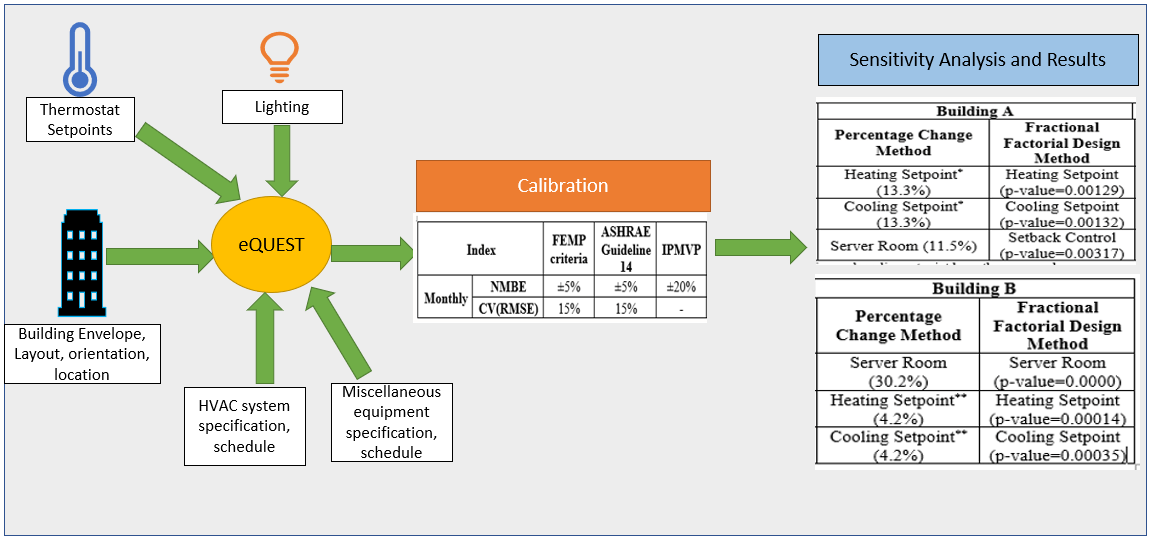 Open Access
Open Access
ARTICLE
eQUEST Based Building Energy Modeling Analysis for Energy Efficiency of Buildings
1 Regional Mechanical Field, Amazon Web Services, Herndon, VA 20170, USA
2 Industrial and Management Systems Engineering, West Virginia University, Morgantown, WV 26505, USA
3 Industrial and Production Engineering, JSS Science & Technology University, Mysuru, 570006, India
* Corresponding Author: Bhaskaran Gopalakrishnan. Email:
Energy Engineering 2024, 121(10), 2743-2767. https://doi.org/10.32604/ee.2024.051035
Received 26 February 2024; Accepted 26 July 2024; Issue published 11 September 2024
Abstract
Building energy performance is a function of numerous building parameters. In this study, sensitivity analysis on twenty parameters is performed to determine the top three parameters that have the most significant impact on the energy performance of buildings. Actual data from two fully operational commercial buildings were collected and used to develop a building energy model in the Quick Energy Simulation Tool (eQUEST). The model is calibrated using the Normalized Mean Bias Error (NMBE) and Coefficient of Variation of Root Mean Square Error (CV(RMSE)) method. The model satisfies the NMBE and CV(RMSE) criteria set by the American Society of Heating, Refrigeration, and Air-Conditioning (ASHRAE) Guideline 14, Federal Energy Management Program (FEMP), and International Performance Measurement and Verification Protocol (IPMVP) for building energy model calibration. The values of the parameters are varied in two levels, and then the percentage change in output is calculated. Fractional factorial analysis on eight parameters with the highest percentage change in energy performance is performed at two levels in a statistical software JMP. For building A, the top 3 parameters from the percentage change method are: Heating setpoint, cooling setpoint and server room. From fractional factorial design, the top 3 parameters are: heating setpoint (p-value = 0.00129), cooling setpoint (p-value = 0.00133), and setback control (p-value = 0.00317). For building B, the top 3 parameters from both methods are: Server room (p-value = 0.0000), heating setpoint (p-value = 0.00014), and cooling setpoint (p-value = 0.00035). If the best values for all top three parameters are taken simultaneously, energy efficiency improves by 29% for building A and 35% for building B.Graphic Abstract

Keywords
Cite This Article
 Copyright © 2024 The Author(s). Published by Tech Science Press.
Copyright © 2024 The Author(s). Published by Tech Science Press.This work is licensed under a Creative Commons Attribution 4.0 International License , which permits unrestricted use, distribution, and reproduction in any medium, provided the original work is properly cited.


 Submit a Paper
Submit a Paper Propose a Special lssue
Propose a Special lssue View Full Text
View Full Text Download PDF
Download PDF Downloads
Downloads
 Citation Tools
Citation Tools